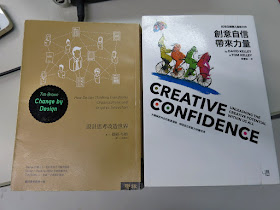The guest speaker was Mr. Mac Leung (Design Thinking Cert. Facilitator) and his presentation topics included how design thinking help on customer services through “What is?”, “What if?”, “What Wows?”, and “What works?”.
In the beginning, Mr. Leung briefed the key concept of Design Thinking was “Design for Delight!” Moreover, he told us don’t answer “Yes, But…” and should answer “Yes, and also…” He also quoted a designer – Charles Eames’ “Embrace Restrictions” (擁抱限制) that the best design come from the toughest limitation.
Then Mr. Leung showed the Design Thinking process which included 3 levels with 7 steps. The title had different colors indicating that the process needed to involve different type of people. Three levels were “Inspiration”, “Ideation” and “Implementation”. Seven steps were “Understanding”, “Observation”, “Point of View”, “Formation of Concept”, “Prototype” and “Testing”. The sequence of steps was not in linear but it went front and back several times.
After that Mr. Leung raised three elements related to Design Thinking. They were “Desirability”, “Feasibility” and “Viability”. He said Design Thinking was able to help us to find the balance point of three elements.
After tea break, Mr. Mac Leung practiced Design Thinking with us using story and drawing.
Another three core elements were “Empathy”, “Observation” and “Insight”.
Empathy – thinking on customer point of view
Observation – finding root causes of the problem
Insight – No expense but most valuable (Find the most meaningful entry point)
The last topic Mr. Lee discussed how to be professional customer service. His explanation started from the Problem to Project to Proactive to Proposal to Process to Probation to Profession and then to Product.
At the end, Mr. Lee introduced two books for Design Thinking. (See below)
Reference:
HKSTP - http://www.hkstp.org








沒有留言:
發佈留言